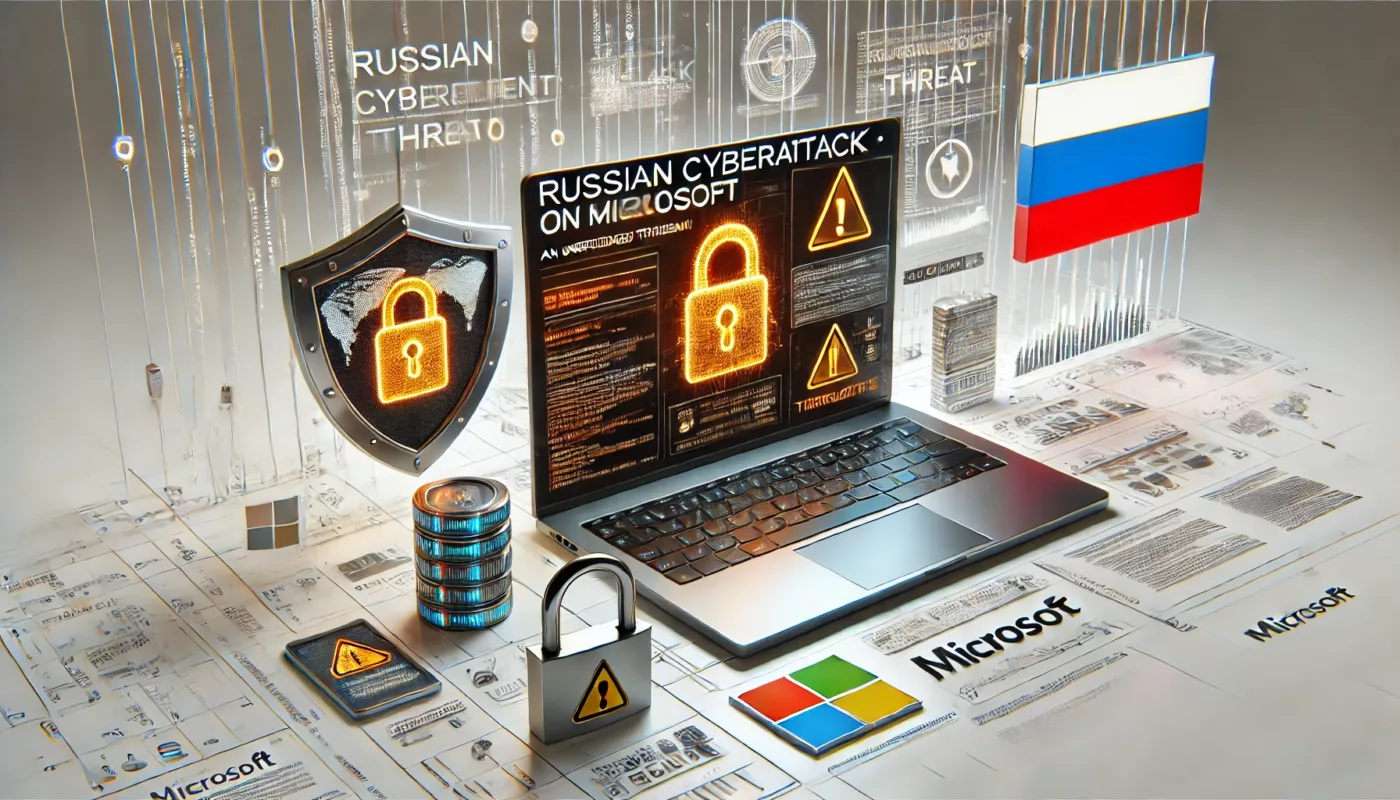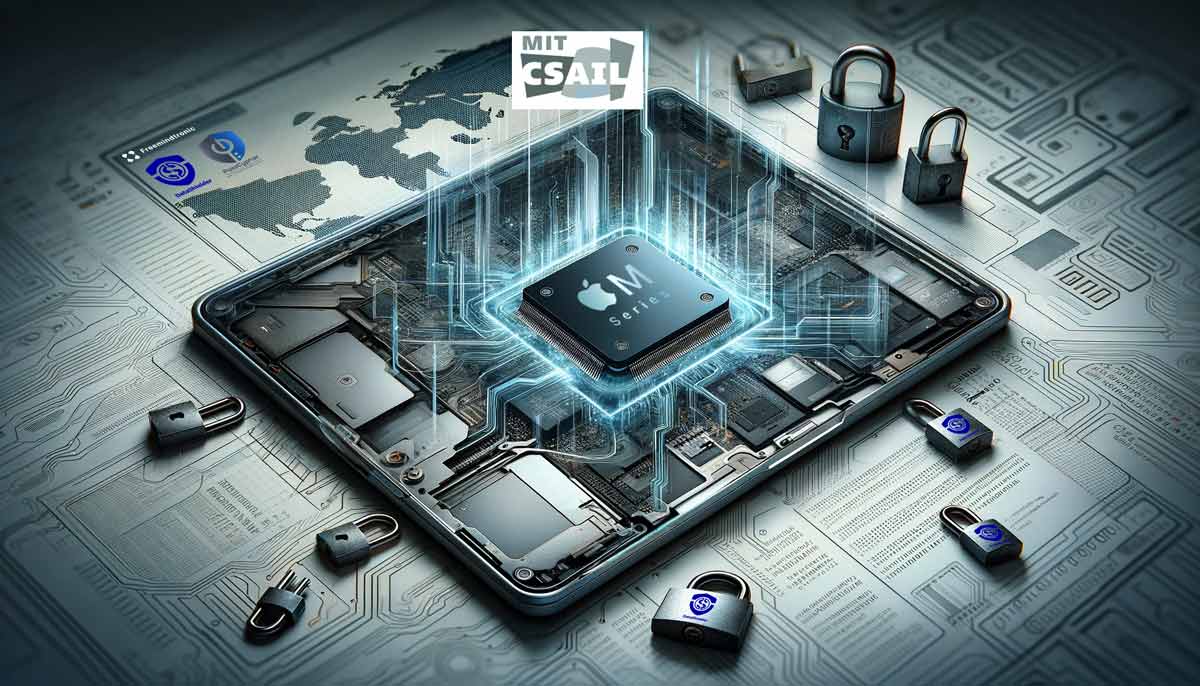Articles, Cyberculture, NFC HSM technology, Technical News
RSA Encryption: How the Marvin Attack Exposes a 25-Year-Old Flaw
Decrypting Marvin’s Assault on RSA Encryption!
Simply explore the complex area of RSA encryption and discover strategies to repel Marvin’s attack. This article examines the intricacies of RSA 4096 encryption, ensuring your cryptographic keys and secrets are protected. Discover an innovative NFC HSM RSA 4096 NFC encryption protocol, serverless and databaseless.
How the RSA Encryption – Marvin Attack Reveals a 25-Year-Old Flaw and How to Protect Your Secrets with the NFC HSM Devices
RSA encryptionRSA encryption is one of the most widely used encryption algorithms in the world, but it is not flawless. In fact, a vulnerability of RSA encryption, known as the Marvin attack, has existed for over 25 years and could allow an attacker to recover the private key of a user from their public key. This flaw, which exploits a mathematical property of RSA encryption, was discovered in 1998 by the cryptographer Daniel Bleichenbacher, but it was never fixed or disclosed to the public. In the first part of this article, we will explain in detail how the Marvin attack works and what it means for the security of RSA encryption.
Moreover, NFC HSM and RSA 4096 represent a new dimension in cryptographic security. These technologies allow you to protect and use your cryptographic keys and secrets within a contactless device that communicates with your smartphone through NFC (Near Field Communication). The main advantage they offer is the formidable defense against cyberattacks, achieved by implementing state-of-the-art encryption algorithms and strong security protocols. You can discover more about the very simple functioning of NFC HSM devices for RSA 4096 encryption, as well as their multiple benefits, by reading until the end of this article. Moreover, we will highlight how Freemindtronic used the extreme level of safety of an NFC HSM device to establish, without contact and only on demand, a virtual communication tunnel encrypted in RSA-4096 without a server, without a database, from an NFC HSM device.
The Marvin Attack: Unveiling a 25-Year-Old RSA Flaw
Understanding the Marvin Attack
The Marvin attack targets the RSA algorithm, a foundational asymmetric encryption technique characterized by the use of two distinct keys: a public key and a private key. The public key serves to encrypt data, while the private key is responsible for decryption. These keys mathematically intertwine, yet revealing one from the other presents an exceedingly challenging task.
Named after Marvin the Paranoid Android from “The Hitchhiker’s Guide to the Galaxy,” this attack exploits a vulnerability in the RSA algorithm discovered by Swiss cryptographer Daniel Bleichenbacher in 1998. The vulnerability relates to the padding scheme that the RSA algorithm uses to introduce random bits into the data before encryption. The padding scheme has a design. It makes the encrypted data look random. It also thwarts attacks based on statistics. However, Bleichenbacher showed his ingenuity. He sent special messages to a server. The server used RSA encryption. By doing so, he could learn about the padding scheme. He could also recover the private key.
Implications of the Marvin Attack
The Marvin attack has profound implications for the security and confidentiality of your secrets. If an attacker successfully retrieves your private key, they gain unfettered access to decrypt all your encrypted data and compromise your confidential information. Furthermore, they can impersonate you by signing messages or executing transactions on your behalf.
The Marvin attack isn’t limited to a single domain; it can impact any system or application that uses RSA encryption with a vulnerable padding scheme. This encompasses web servers that employ HTTPS, email servers that use S/MIME, and blockchain platforms that rely on digital signatures.
Notably, NFC HSM devices that use RSA encryption for secret sharing are vulnerable to the Marvin attack. NFC HSM, short for Near Field Communication Hardware Security Module, is a technology facilitating the storage and utilization of cryptographic keys and secrets within contactless devices such as cards, stickers, or keychains. These devices communicate with smartphones via NFC, a wireless technology enabling short-range data exchange between compatible devices.
If an attacker intercepts communication between your NFC HSM device and smartphone, they may try a Marvin attack on your device, potentially recovering your private key. Subsequently, they could decrypt secrets stored within your device or gain access to your online accounts and services.
The Common Factor Attack in RSA Encryption
Understanding the Common Factor Attack
In the realm of RSA encryption, attackers actively exploit a vulnerability known as the Common Factor Attack. Here’s a concise breakdown:
1. Identifying Shared Factors
- In RSA encryption, public keys (e, n) and private keys (d, n) play pivotal roles.
- Attackers meticulously seek out common factors within two public keys, exemplified by (e1, n1) and (e2, n2).
- Upon discovering a shared factor, their mission gains momentum.
2. Disclosing the Missing Factor
- Once a common factor ‘p’ surfaces, uncovering its counterpart ‘q’ becomes relatively straightforward.
- This is achieved through the simple act of dividing one key’s module by ‘p’.
3. Attaining Private Keys
- Empowered with ‘p’ and ‘q,’ attackers adeptly compute private keys like ‘d1’ and ‘d2.’
- This mathematical process involves modular inverses, bestowing them with access to encrypted content.
4. Decrypting Messages with Precision
- Armed with private keys ‘d1’ and ‘d2,’ attackers skillfully decrypt messages initially secured by these keys.
- Employing the formula ‘m = c^d mod n,’ they meticulously unlock the concealed content.
This simplified overview sheds light on the Common Factor Attack in RSA encryption. For a more comprehensive understanding, delve into further details here
Safeguarding Against the Marvin Attack
To fortify your defenses against the Marvin attack, it is imperative to employ an updated version of the RSA algorithm featuring a secure padding scheme. Secure padding ensures that no information about the encrypted data or private key is leaked. For example, you can adopt the Optimal Asymmetric Encryption Padding (OAEP) scheme, a standard endorsed by RSA Laboratories.
Additionally, utilizing a reliable and secure random number generator for generating RSA keys is essential. A robust random number generator produces unpredictable and difficult-to-guess random numbers, a critical element for the security of any encryption algorithm, as it guarantees the uniqueness and unpredictability of keys.
The Marvin attack, though a 25-year-old RSA flaw, remains a persistent threat capable of compromising the security of RSA-encrypted data and communications. Vigilance and adherence to cryptographic best practices are essential for shielding against this menace.
Choosing a trusted and certified provider of NFC HSM devices and RSA encryption services is equally pivotal. A reputable provider adheres to industry-leading security and quality standards. Freemindtronic, a company based in Andorra, specializes in NFC security solutions and has developed a plethora of technologies and patents grounded in NFC HSM devices and RSA 4096 encryption. These innovations offer a spectrum of advanced features and benefits across diverse applications.
In the following section, we will delve into why Freemindtronic has chosen to utilize RSA 4096 encryption in the context of the Marvin attack. Additionally, we will explore how Freemindtronic secures secret sharing among NFC HSM devices, elucidate the concept of NFC HSM devices, and unveil the advantages and benefits of the technologies and patents pioneered by Freemindtronic.
How Does RSA 4096 Work?
RSA 4096 is built upon the foundation of asymmetric encryption, employing two distinct keys: a public key and a private key. The public key can be freely disseminated, while the private key must remain confidential. These keys share a mathematical relationship, but uncovering one from the other poses an exceptionally daunting challenge.
RSA 4096 hinges on the RSA algorithm, relying on the formidable complexity of factoring a large composite number into the product of two prime numbers. RSA 4096 employs prime numbers of 4096 bits in size, rendering factorization virtually impossible with current computational capabilities.
RSA 4096 facilitates four primary operations:
- Encryption: Transforming plaintext messages into encrypted messages using the recipient’s public key. Only the recipient can decrypt the message using their private key.
- Decryption: Retrieving plaintext messages from encrypted ones using the recipient’s private key. Only the recipient can perform this decryption.
- Signature: Adding an authentication element to plaintext messages using the sender’s private key. The recipient can verify the signature using the sender’s public key.
- Signature Verification: Validating the authenticity of plaintext messages and their sender using the sender’s public key.
In essence, RSA 4096 ensures confidentiality, integrity, and non-repudiation of exchanged messages.
But how can you choose and utilize secure RSA keys? Are there innovative solutions available to bolster the protection of cryptographic secrets? This is the focal point of our next section, where we will explore the technologies and patents developed by Freemindtronic for RSA 4096 secret sharing among NFC HSM devices.
Technologies and Patents Developed by Freemindtronic for RSA 4096 Secret Sharing among NFC HSM Devices
Freemindtronic employs RSA 4096 to secure the sharing of secrets among NFC HSM devices, driven by a commitment to robust security and trust. RSA 4096 stands resilient against factorization attacks, the most prevalent threats to RSA encryption. It upholds the confidentiality, integrity, and non-repudiation of shared secrets.
Freemindtronic is acutely aware of the potential vulnerabilities posed by the Marvin attack. This attack can compromise RSA if the prime numbers used to generate the public key are too close in proximity. Therefore, Freemindtronic diligently adheres to cryptographic best practices when generating robust and random RSA keys. This involves using large prime numbers, usually larger than 2048 bits, and employing a dependable and secure random number generator Freemindtronic regularly validates the strength of RSA keys through online tools or other means and promptly replaces keys suspected of weakness or compromise.
In summary, Freemindtronic’s selection of RSA 4096 is informed by its robustness. This choice is complemented by unwavering adherence to cryptographic best practices. The incorporation of the EVI protocol bolsters security, ensuring the imperviousness of secrets shared among NFC HSM devices. This will be further elucidated in the following sections
Why Freemindtronic Utilizes RSA 4096 Against the Marvin Attack
Freemindtronic’s choice to utilize RSA 4096 for securing secret sharing among NFC HSM devices is grounded in its status as an asymmetric encryption algorithm renowned for delivering a high level of security and trust. RSA 4096 effectively resists factorization attacks, which are among the most prevalent threats against RSA encryption. It guarantees the confidentiality, integrity, and non-repudiation of shared secrets.
To address the potential consequences of the Marvin attack, Freemindtronic meticulously follows cryptographic best practices when generating strong and random RSA keys. The company employs prime numbers of substantial size, typically exceeding 2048 bits, in conjunction with a reliable and secure random number generator. Freemindtronic vigilantly validates the strength of RSA keys and promptly replaces them if any suspicions of weakness or compromise arise.
Moreover, Freemindtronic harnesses the power of the EVI (Encrypted Virtual Interface) protocol, which enhances RSA 4096’s security profile. EVI facilitates the exchange of RSA 4096 public keys among NFC HSM devices, introducing a wealth of security measures, including encryption, authentication, anti-cloning, anti-replay, anti-counterfeiting, and the use of a black box. EVI also enables the transmission of secrets encrypted with the recipient’s RSA 4096 public key, using the same mechanism.
In summary, Freemindtronic’s selection of RSA 4096 is informed by its robustness, complemented by unwavering adherence to cryptographic best practices. The incorporation of the EVI protocol bolsters security, ensuring the imperviousness of secrets shared among NFC HSM devices. This will be further elucidated in the following sections.
How Freemindtronic Utilizes RSA 4096 to Secure Secret Sharing Among NFC HSM Devices
Freemindtronic leverages RSA 4096 to fortify the security of secret sharing among NFC HSM devices, following a meticulously orchestrated sequence of steps:
- Key Generation: RSA 4096 key pairs are generated on each NFC HSM device, utilizing a dependable and secure random number generator.
- Public Key Exchange: The RSA 4096 public keys are exchanged between the two NFC HSM devices using the EVI (Encrypted Virtual Interface) protocol. EVI introduces multiple layers of security, including encryption, authentication, anti-cloning, anti-replay, anti-counterfeiting measures, and the use of a black box.
- Secret Encryption: The secret is encrypted using the recipient’s RSA 4096 public key, employing a hybrid encryption algorithm that combines RSA and AES.
- Secure Transmission: The encrypted secret is transmitted to the recipient, facilitated by the EVI protocol.
- Secret Decryption: The recipient decrypts the secret using their RSA 4096 private key, employing the same hybrid encryption algorithm.
Through this meticulous process, Freemindtronic ensures the confidentiality, integrity, and non-repudiation of secrets exchanged between NFC HSM devices. This robust approach thwarts attackers from reading, altering, or falsifying information protected by RSA 4096.
But what exactly is an NFC HSM device, and what communication methods exist for secret sharing among these devices? What are the advantages and benefits offered by the technologies and patents pioneered by Freemindtronic? These questions will be addressed in the subsequent sections.
What Is an NFC HSM Device?
An NFC HSM (Near Field Communication Hardware Security Module) is a specialized hardware security module that communicates wirelessly with an Android smartphone via NFC (Near Field Communication) technology. These devices come in the form of cards, stickers, or keychains and operate without the need for batteries. They feature EEPROM memory capable of storing up to 64 KB of data.
NFC HSM devices are designed to securely store and utilize cryptographic keys and secrets in an isolated and secure environment. They shield data from cloning, replay attacks, counterfeiting, or extraction and include an access control system based on segmented keys.
One prime example of an NFC HSM device is the EviCypher NFC HSM developed by Freemindtronic. This technology allows for the storage and utilization of cryptographic keys and secrets within a contactless device, such as a card, sticker, or keychain. EviCypher NFC HSM offers a range of features, including offline isolation, seamless integration with other technologies, and enhancements to the user experience. With its robust security measures and innovative features, EviCypher NFC HSM sets a new standard for secure communication and secret management in the digital realm.
Resistance Against Brute Force Attacks on NFC HSM
The RSA 4096 private key is encrypted with AES 256. Therefore, the user cannot extract it from the EEPROM memory. The NFC HSM has this memory. It also has other secrets in this memory. This memory is non-volatile. As a result, it can last up to 40 years without power. Consequently, any invasive or non-invasive brute force attack on NFC HSM is destined for failure. This is due to the fact that secrets, including the RSA private key, are automatically encrypted in the EEPROM memory of the NFC HSM using AES-256 with segmented keys of physical origin, some of which are externalized from the NFC HSM.
Real-Time Secret Sharing with EviCore NFC HSM
An intriguing facet of EviCore NFC HSM technology is its ability to facilitate real-time secret sharing without the need for a remote server or database. EviCore NFC HSM accomplishes this by encrypting secrets with the recipient’s randomly generated RSA 4096 public key directly on their NFC HSM device. This innovative approach to secret sharing eliminates the necessity for a trusted third party. Furthermore, EviCore NFC HSM executes these operations entirely in the volatile (RAM) memory of the phone, leaving no traces of plaintext secrets in the computer, communication, or information systems. As a result, it renders remote or proximity attacks, including invasive or non-invasive brute force attacks, exceedingly complex, if not physically impossible. Our EviCore NFC HSM technology is an Android application designed for NFC-enabled phones, functioning seamlessly with our NFC HSM devices. This application serves as both firmware and middleware, constituting an embedded system, offering optimal performance and compatibility with NFC HSM devices.
What Are the Advantages and Benefits of NFC HSM Devices and RSA 4096 Encryption?
NFC HSM devices and RSA 4096 encryption offer numerous advantages and benefits across various applications and domains. Some of these include:
- Enhanced Security and Trust: They bolster security and trust in the digital landscape through the utilization of a robust and efficient encryption algorithm that withstands factorization attacks.
- Simplified Key and Secret Management: They simplify the management and sharing of cryptographic keys and secrets by leveraging contactless technology for communication with Android phones via NFC.
- Improved Device Performance and Compatibility: They enhance device performance and compatibility by functioning as a firmware-like middleware embedded within an Android application for NFC-enabled phones.
- Enhanced User Experience: They improve the user experience of devices by offering features such as offline isolation, seamless integration with other technologies, and enhanced user experiences.
In summary, NFC HSMs and RSA 4096 encryption offer inventive and pragmatic answers to the escalating requirements for security and confidentiality in the digital sphere.








